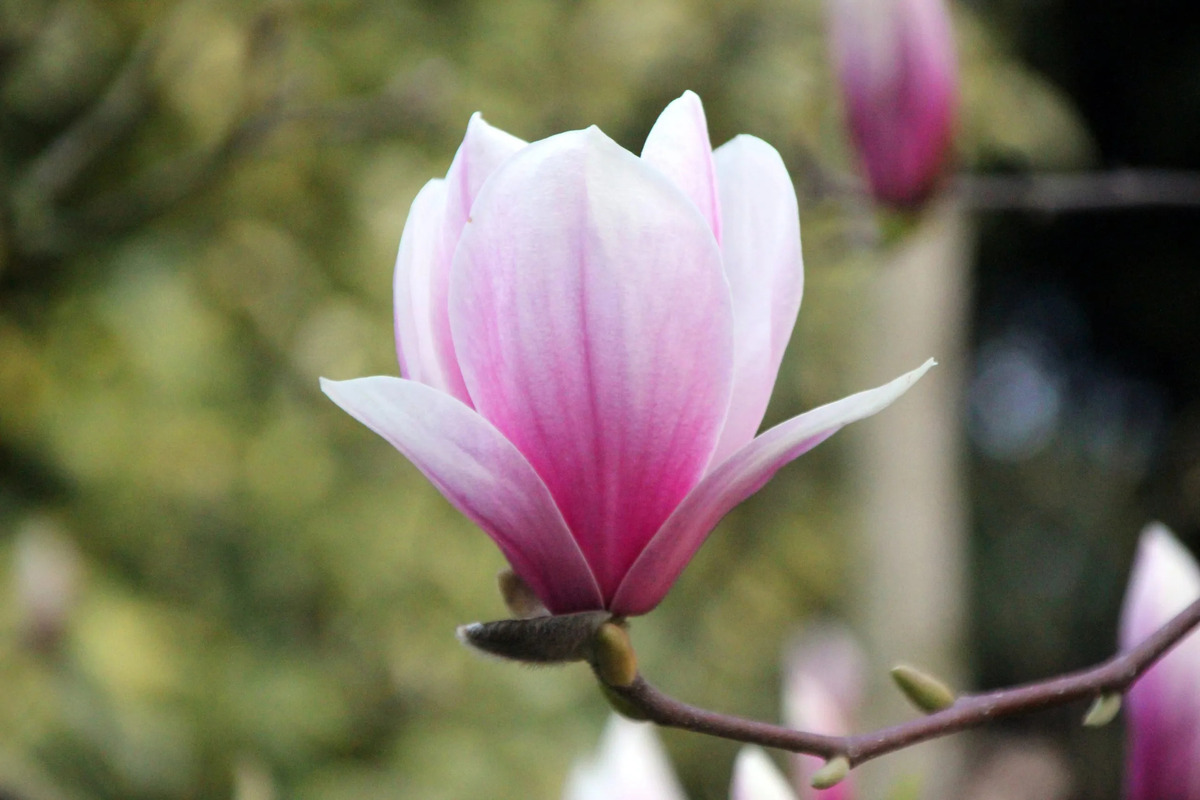
When it comes to stunning and majestic flowering trees, one can’t help but think of the magnificent magnolia. With their large, fragrant blossoms and glossy green foliage, magnolias are synonymous with beauty and grace. But did you know that there’s much more to these enchanting trees than meets the eye? From their ancient origins to their surprising uses in traditional medicine, magnolias hold a wealth of fascinating facts that will leave you amazed. In this article, we will delve into the world of magnolias and uncover 17 surprising facts about these remarkable plants. So, fasten your seatbelts and get ready to be captivated by the captivating world of magnolias!
Key Takeaways:
- Magnolias are ancient, diverse, and symbolize beauty and endurance. Their unique flowers, medicinal properties, and cultural significance make them remarkable plants for gardens and landscapes.
- Magnolias are resilient, long-lived, and resistant to pests. With their impressive heights, vibrant colors, and long blooming periods, they add beauty and charm to any environment, making them a captivating choice for ornamental trees.
The Magnolia is an Ancient Flowering Plant
Magnolias are one of the oldest flowering plants on Earth, dating back over 95 million years. They have evolved even before bees and rely on beetles for pollination.
Magnolias Symbolize Beauty and Perseverance
With their stunning and fragrant blossoms, magnolias have become a symbol of beauty, purity, and endurance. These qualities make them popular choices for weddings and other special occasions.
There are over 200 Species of Magnolia
The magnolia family, Magnoliaceae, consists of more than 200 species. Each species has its own distinct characteristics, flower colors, and growing habits.
Magnolias Have Different Types of Flowers
While most people are familiar with the large, showy flowers of magnolias, not all magnolia species have the same type of blooms. Some have cup-shaped flowers, while others have star-shaped or saucer-shaped flowers.
They Attract Pollinators with Their Scent
Magnolia flowers produce a strong and sweet fragrance that attracts bees, butterflies, and other pollinators. The scent helps in luring them towards the flowers for pollination.
Magnolia Trees Have Medicinal Properties
Some magnolia species, such as the Magnolia officinalis, have been used in traditional medicine for centuries. The bark and flowers contain compounds with anti-inflammatory and anti-anxiety properties.
Magnolias Have Cultural Significance
Magnolias hold great cultural significance in many countries. They are the state flowers of Mississippi and Louisiana in the United States and symbolize purity and nobility in Chinese culture.
Magnolia Fossils Have Been Found Around the World
Fossil evidence of magnolias has been found in North America, Europe, and Asia. These ancient fossils provide valuable insights into the evolution and distribution of magnolia species.
Some Magnolias Can Grow Distinctive Cones
While most magnolias produce flowers, some species, like the Magnolia fraseri, develop cone-like fruit. These unique cones house the plant’s seeds and add an interesting visual element to the tree.
They Come in Different Colors
Magnolia flowers are not limited to just white or pink. Some species produce blooms in shades of yellow, purple, red, and even green, adding vibrant colors to gardens and landscapes.
Magnolia Wood is Highly Valued
The wood of magnolia trees is highly prized for its strength, durability, and beautiful grain patterns. It is commonly used in furniture making, cabinetry, and musical instruments.
Magnolias Have Long Blooming Periods
Depending on the species, magnolia flowers can bloom for several weeks or even months. Their extended blooming period ensures that they are a sight to behold for a significant portion of the year.
Magnolias are Resistant to Many Pests
One of the benefits of cultivating magnolia trees is their resistance to various pests and diseases. This makes them relatively easy to maintain and less susceptible to damage.
They Can Reach Impressive Heights
Some magnolia species, such as the Southern Magnolia (Magnolia grandiflora), can grow to towering heights of up to 80 feet. These majestic trees provide shade and beauty in parks and gardens.
Magnolias Have a Unique Leaf Structure
The leaves of magnolia trees are often large and glossy, with a unique shape and texture. They add an attractive element to the tree even when it is not in bloom.
Magnolias Make Great Garden Specimens
Due to their exquisite flowers, distinctive foliage, and long blooming periods, magnolias are highly prized as ornamental trees in gardens and parks. They create a focal point and enhance the overall aesthetics of the landscape.
Magnolia Trees Can Live for Centuries
When properly cared for, magnolia trees have the potential to live for hundreds of years. Their longevity is a testament to their resilience and ability to adapt to different environmental conditions.
So there you have it – 17 surprising facts about magnolias. From their ancient origins to their diverse colors and cultural significance, magnolias truly are remarkable plants. Whether you want to enhance your garden, enjoy their therapeutic benefits, or simply admire their beauty, magnolias are sure to captivate and delight.
Conclusion
In conclusion, magnolias are truly fascinating plants that capture our attention with their extraordinary beauty and unique characteristics. From their ancient origins to their diverse species and stunning blossoms, magnolias never cease to amaze us. These plants hold significant cultural and historical value, representing resilience and beauty across different cultures around the world.Whether you’re a gardening enthusiast or simply appreciate the beauty of nature, magnolias are a perfect choice to add elegance and charm to any landscape. So, go ahead and explore the astonishing world of magnolias, and enjoy the many surprises they have to offer.
FAQs
1. Where are magnolias typically found?
Magnolias are found across various parts of the world, including Asia, the Americas, and parts of Africa.
2. Do all magnolias have large flowers?
No, not all magnolias have large flowers. While some species are known for their showy blossoms, others may have smaller or more discreet flowers.
3. Are magnolias difficult to grow?
Generally, magnolias are relatively easy to grow. However, certain species may have specific requirements and need proper care to thrive.
4. Can magnolias be grown in containers?
Yes, many magnolia varieties can be grown in containers. However, it is important to choose a suitable species and provide proper care and maintenance.
5. Are magnolias important in traditional medicine?
Yes, certain parts of magnolia plants have long been used in traditional medicine for various health purposes.
6. How long do magnolia flowers typically last?
The duration of magnolia flowers can vary depending on the species and environmental factors. On average, the blossoms may last for several days to a couple of weeks.
7. Can magnolias be propagated from cuttings?
Yes, many magnolia varieties can be propagated from cuttings. However, it is essential to follow proper techniques for successful propagation.
Was this page helpful?
Our commitment to delivering trustworthy and engaging content is at the heart of what we do. Each fact on our site is contributed by real users like you, bringing a wealth of diverse insights and information. To ensure the highest standards of accuracy and reliability, our dedicated editors meticulously review each submission. This process guarantees that the facts we share are not only fascinating but also credible. Trust in our commitment to quality and authenticity as you explore and learn with us.


